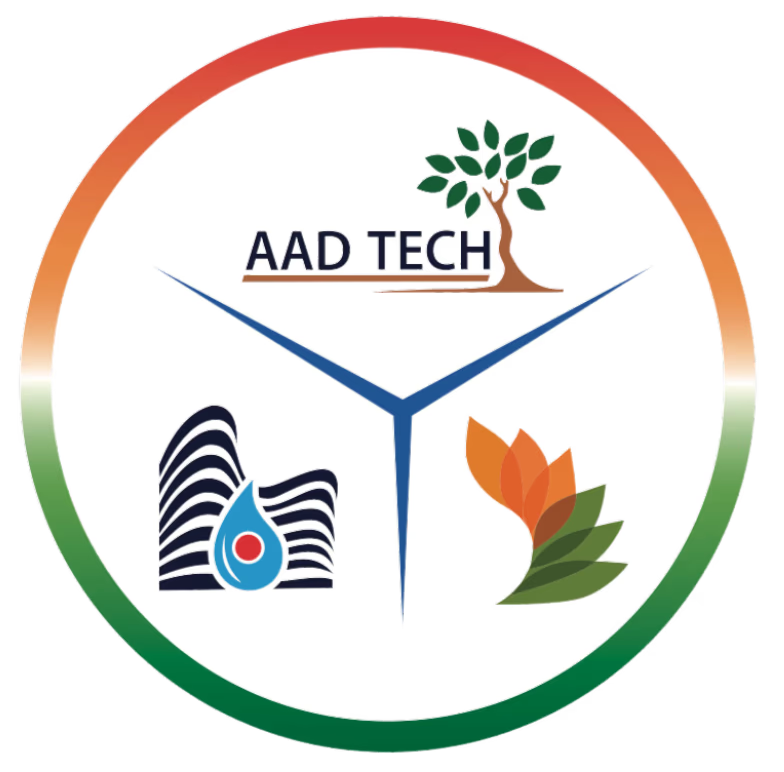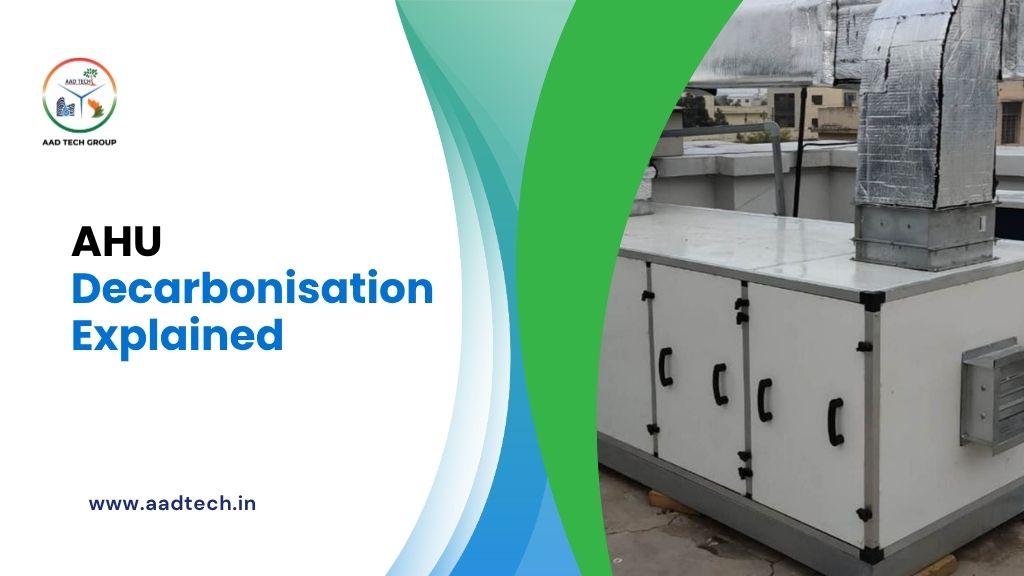At Aad Tech, we believe that achieving sustainability in building operations starts with smarter engineering. One of the most effective ways to cut energy consumption and carbon emissions in HVAC systems is through AHU decarbonisation.
Air Handling Units (AHUs) are at the heart of every ventilation and air conditioning system. They control temperature, humidity, and air quality in offices, factories, hospitals, and cleanrooms. But aging or inefficient AHUs can quietly waste significant energy. AHU refurbishment can help facilities transform these systems into low-carbon, high-efficiency assets.
Understanding AHU Decarbonisation
Decarbonisation means reducing the carbon footprint of equipment and processes through energy efficiency, renewable integration, and smart operation. For AHUs, this involves upgrading mechanical and electrical components to optimise airflow, minimise energy waste, and enhance indoor air quality.
Decarbonisation through energy saving retrofit does not require replacing the entire unit. Instead, we upgrade existing systems to meet modern performance standards, supporting both environmental goals and operational budgets.
Why AHU Decarbonisation Matters
Buildings account for almost 40% of global energy-related CO₂ emissions (IEA, 2023). A significant portion of that comes from HVAC operations. By retrofitting existing systems, facility owners can reduce their carbon footprint and operating costs simultaneously.
For industrial and commercial environments, these improvements also contribute to regulatory compliance, sustainability certifications, and long-term cost savings.
Core Strategies for AHU Decarbonisation
AHU decarbonisation integrates engineering upgrades with smart controls. The result is a system that performs better, consumes less energy, and lasts longer.
1. Fan and Motor Replacement
Replacing belt-driven fans with EC (Electronically Commutated) fans improves airflow control and reduces power consumption. These components can cut fan energy use by 30–50%.
2. Filter System Optimisation
High-efficiency filters improve air quality but can increase resistance. We select filters with the right pressure drop and materials to balance energy efficiency and performance.
3. Heat Recovery Integration
Adding energy recovery wheels or plate heat exchangers allows exhaust air to pre-condition incoming air. This reduces cooling and heating loads, leading to measurable energy savings.
4. Intelligent Controls and Sensors
Integrating Building Management System (BMS) controls, CO₂ sensors, and demand-based ventilation ensures the AHU operates only when and where needed, minimising unnecessary runtime. We achieve these via in-house developed Controllers that could communicate with the BMS and Air handling unit
5. Structural Refurbishment
In an AHU refurbishment, structural repairs and insulation upgrades are made to improve thermal efficiency and prevent air leakage. This step extends system life by 10–15 years.
Benefits of an Energy Saving Retrofit
An energy saving retrofit offers tangible results for both sustainability and business performance.
- Lower Energy Costs: Modernised fans, motors, and control systems reduce electricity use significantly.
- Reduced Carbon Emissions: Every kilowatt saved translates into lower CO₂ output, helping companies meet net-zero targets.
- Improved Air Quality: Better filters and controls create healthier indoor environments.
- Extended Equipment Life: Refurbished units delay the need for complete replacement.
- Quick Payback: Typical retrofit payback periods range from 1.5 to 3 years, depending on system size and runtime.
The AHU Retrofit Process at Aad Tech
We follow a structured, data-driven retrofit methodology that ensures measurable outcomes.
- Assessment: We begin by auditing airflow, power consumption, and system leakage.
- Design: Our team identifies the optimal combination of mechanical and control upgrades for maximum efficiency.
- Implementation: Components are replaced or refurbished with minimal downtime.
- Validation: Post-retrofit testing verifies airflow balance, temperature control, and power reduction.
- Monitoring: Integration with smart dashboards allows clients to track performance in real time.
This process helps clients achieve both higher energy efficiency, lower maintenance costs, increased life of the equipment and regulatory compliance.
Decarbonisation and ESG Alignment
More organisations are linking maintenance decisions to Environmental, Social, and Governance (ESG) goals. AHU decarbonisation directly supports these priorities by cutting emissions, improving air quality, and optimising energy use.
By adopting AHU retrofit strategies, facilities not only reduce carbon emissions but also demonstrate environmental responsibility to clients, investors, and regulators.
Key Takeaways
- Decarbonisation through AHU refurbishment is a practical, cost-effective path toward sustainable operations.
- Upgrading fans, filters, and controls improves energy efficiency and air quality.
- Smart sensors and automation help achieve greater energy savings and performance.
- Over the Air maintenance ensures consistent long-term results.
At Aad Tech, we combine engineering expertise with sustainability insights to deliver AHU solutions that lower energy use and extend system life.

